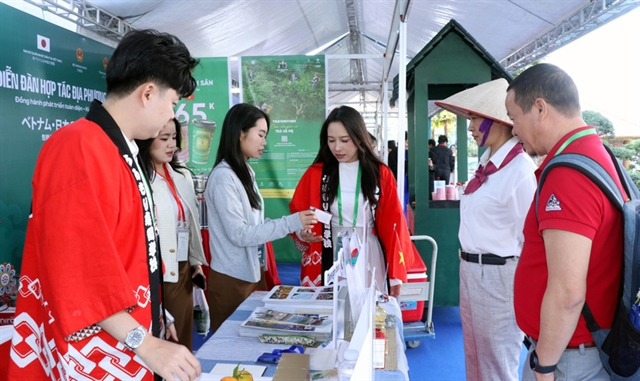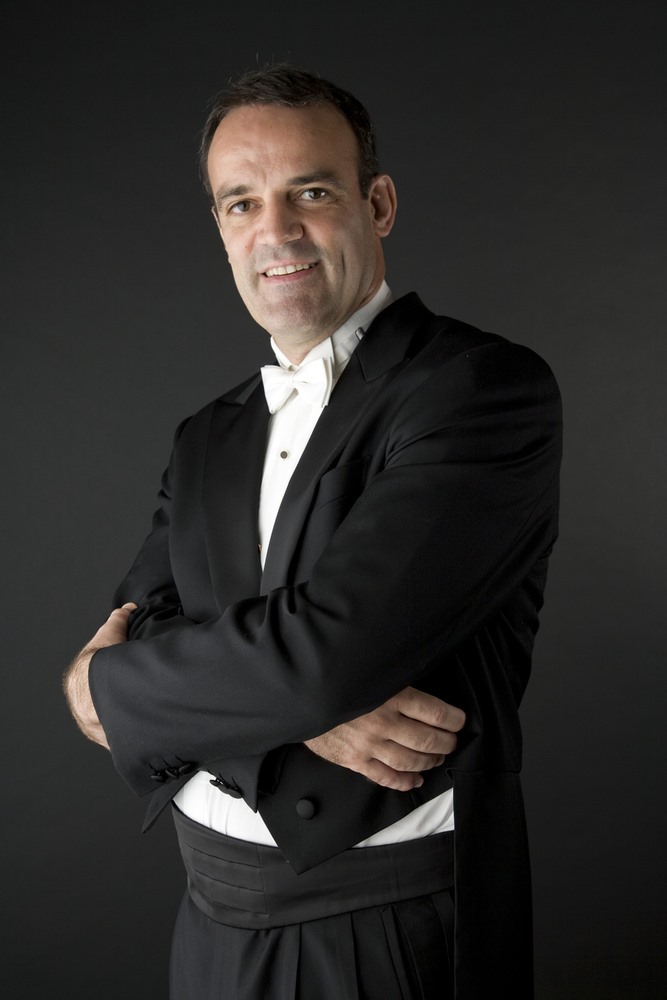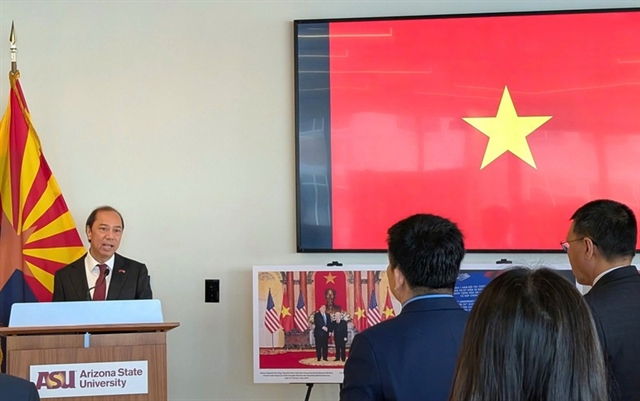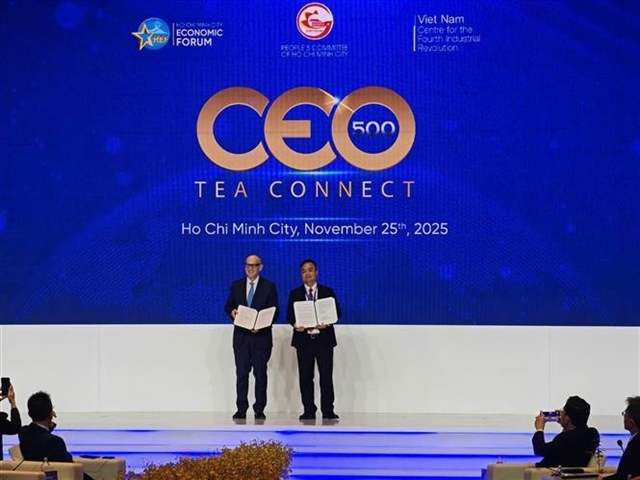 Life & Style
Life & Style

The second Asia-Europe New Music Festival brought together in Hà Nội some 200 musicians and artists from 30 countries and territories. Eleven big concerts took stage featuring the best and latest compositions by Vietnamese and international composers.
 |
| Composer Robert Casteels |
The second Asia-Europe New Music Festival brought together in Hà Nội some 200 musicians and artists from 30 countries and territories. Eleven big concerts took stage featuring the best and latest compositions by Vietnamese and international composers.
Composer Robert Casteels debuted a symphony he wrote for a Vietnamese monochord instrument called đàn bầu at the festival’s opening concert at the Hà Nội Opera House on October 12. Casteels conducted the Việt Nam National Symphony Orchestra and đàn bầu artist Bùi Lệ Chi who performed the composition, entitled Cụ Rùa (great grandfather/grandmother turtle).
Casteels was born in Belgium. He graduated from top music conservatories in Brussels, London and New York (the Juilliard School). He is a composer, conductor and educator. For the last 20 years he has been based in Singapore. He guests conduct orchestras mainly in Asia, enjoys teaching and composing music that combines instruments from East and West.
Culture vulture interviews composer Casteels about his new compostion and the Asia-Europe New Music Festival.
How did you feel about your work being premiered in Hà Nội ?
I was very happy that my work Cụ Rùa was selected to be performed at the festival opening night because this work was specifically composed for the 34th Asia Composers League (ACL) Festival & Conference, and because it will be hard for me to find opportunities to perform such a work.
Performing new music is always challenging for any musician. The musicians of the Việt Nam National Symphony Orchestra did a great job during the preparations before my arrival and during the rehearsals and concert I conducted.
What made you compose the musical work for đàn bầu and the orchestra ?
I have been fascinated by the đàn bầu since I first discovered its sound during a recital by Vietnamese artist Lệ Chi years ago in Singapore and during a 2014 ACL concert in Tokyo. I heard this wonderful instrument again during my visits to Việt Nam as a tourist and when I performed at an electro-acoustic concert in Hà Nội last year.
I was only waiting for an occasion to compose and that became the 34th ACL Festival & Conference this yea. I was again charmed by the warm hospitality of Vietnamese people.
Could you explain what the piece is about and how you were inspired to compose it?
The inspiration was threefold: ever since my first visit to Việt Nam, I have been touched by the kindness of its people and beauty of its nature. I have been charmed by the melancholic unique timbre of the đàn bầu and I have been intrigued by the microtonal possibilities of the đàn bầu. The triggering factor for me to choose the legends of King An Duong Vương and King Lê Lợi as the basis of this composition was the demise earlier this year of Cụ Rùa, the venerable well-loved turtle living in Hoàn Kiếm Lake in Hà Nội capital.
Even though the eight subparts of my composition connect to various twists and turns of the two legends, I felt compelled to stay away from a literal sonic rendition out of respect for these sagas that belong to the collective memory of the Vietnamese people and occupy a central role in their mythology.
I understand that the universal moral of the legends lies in the value of ruling wisely with a limited amount of force. This symphonic poem is based on one chord, one mode and one rhythm that undergo a constant process of change. The poetic ending evokes a peaceful aquatic environment far below, and a paradisiac shimmer of iridescent light far above.
In your opinion what is the Asia - Europe New Music Festival’s significance ?
It is very important to hold a festival where new music from different parts of the world is presented. There is no competition, but a genuine joy of mutual discovery. I was impressed by the organisation, the amount and quality of the concerts.
From a musician’s point of view what does Việt Nam need do to preserve the đàn bầu ?
The đàn bầu is truly a unique instrument, which has no equivalent in European, Chinese, Indian, Korean or Japanese music. The flexible vertical bar allows for the most subtle microtones, that is intervals that are smaller than a semitone.
Its timbre is poignant and poetic. The đàn bầu is also a difficult instrument to master. — VNS




